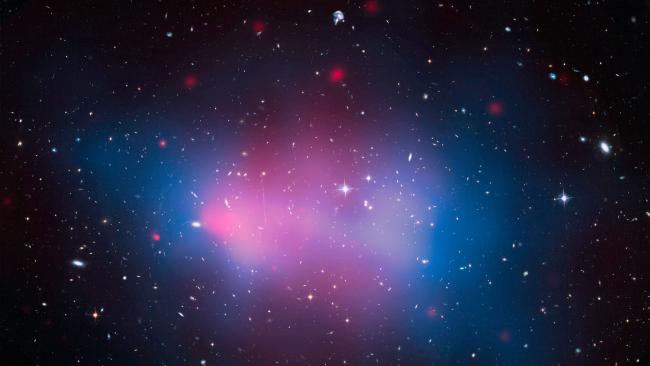Viz-e-Lab
The visual presentation of data in the form of images or video is an important part of science, both for researchers and the general public. The Viz-e-Lab at the Center for Astrophysics, led by Professor Alyssa Goodman, is a lab designed for astronomers and educators to develop new innovative ways to present scientific information. The lab contains a variety of production and presentation equipment for use by researchers.

A galaxy cluster nicknamed "El Gordo" about 7 billion light years from Earth.
Visualizing Science
Viz-e-Lab researchers have developed or participated in developing a number of important projects in astronomy and science education, including:
-
The WorldWide Telescope (WWT) is a free and open interactive program designed for generating dynamic views of the night sky, along with descriptions of astronomical objects. The WWT Ambassadors are scientists and educators at Harvard who use this tool for public science outreach and education.
-
Seamless Astronomy is a project designed to merge data, published articles, social media, and other materials used by researchers into a system that makes distribution of information as smooth as possible.
-
Viz-e-Lab researchers have developed an advanced interface for the Smithsonian Astronomical Observatory/NASA Astrophysics Data System (ADS), to present important information in a dynamic way. ADS is a database of published articles — both technical and nontechnical — in astronomy and related fields.
-
More and more researchers are publishing their full data in an open way, in addition to the processed version in technical articles, to offer transparency in their methods and to control how that data is used by others. The Dataverse Project is an online database designed to make open data useful for people who provide and use the information.